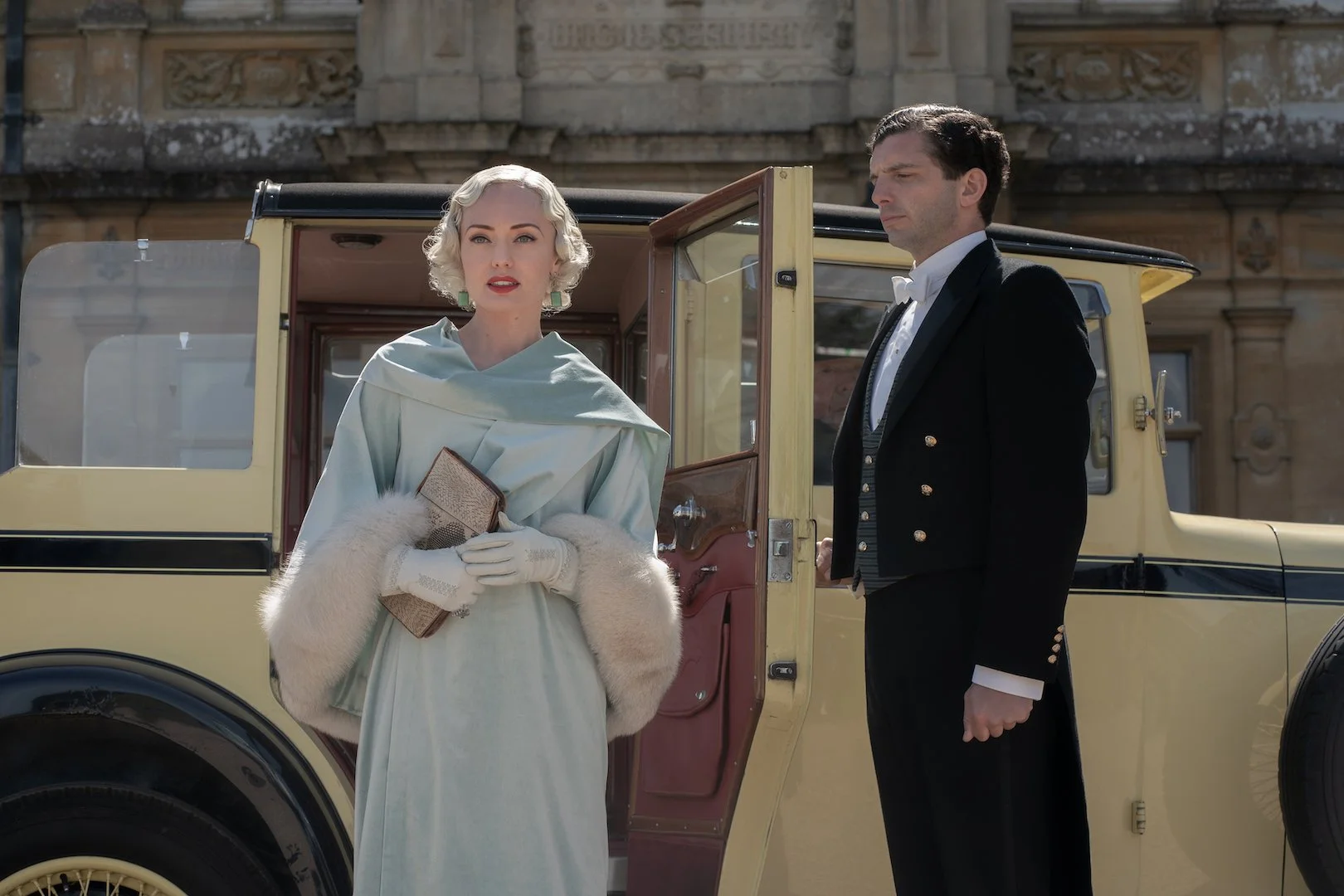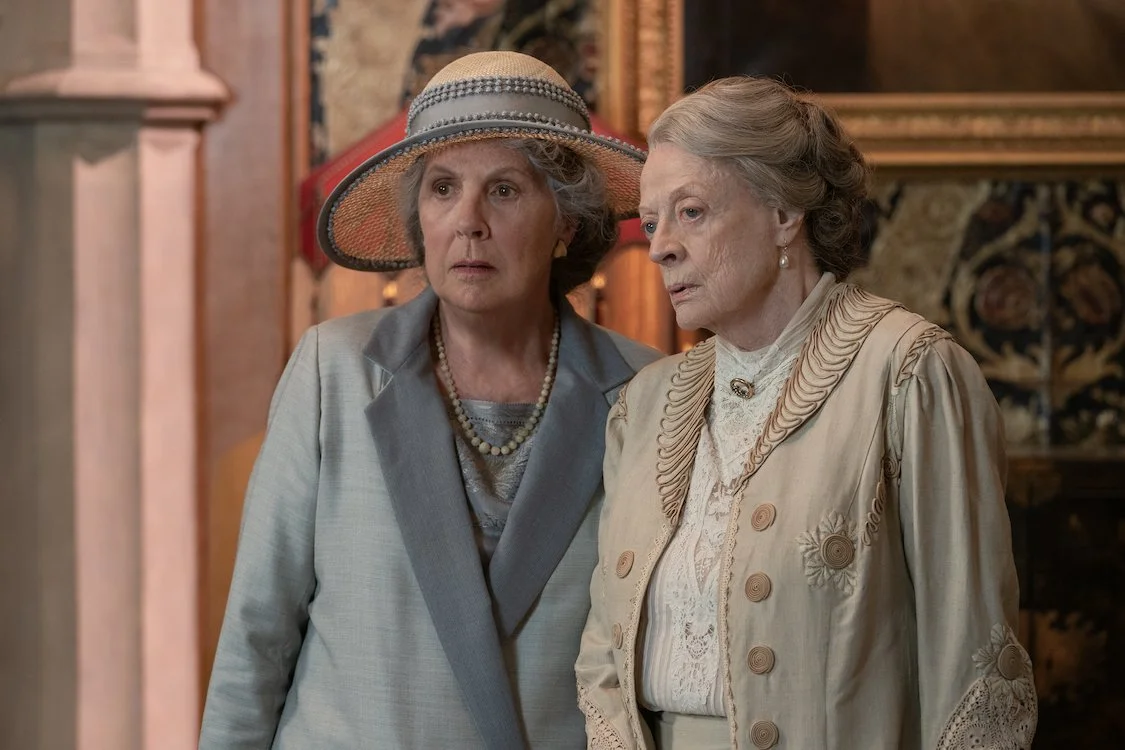Down and Out?
A new era but the same old ‘charming’ class divide dramedy in the sequel to the post-series film about fading but-not-dead-yet nobility.
Downton Abbey: A New Era
Director: Simon Curtis • Writer: Julian Fellowes
Starring: Hugh Bonneville, Elizabeth McGovern, Maggie Smith, Michelle Dockery, Laura Carmichael, Jim Carter, Imelda Staunton, Hugh Dancy, Dominic West, Laura Haddock, Nathalie Baye, Jonathan Zaccaï
UK/USA • 2hrs 5mins
Opens Hong Kong June 9 • IIA
Grade: B
Okay. Wait. Is this the series about uptight English people lording it over the working class led by a sharp-tongued, extremely elder stateswoman in a giant castle they probably stole from the Scots, or is that The Crown? Who can tell? They’re almost identical. But indeed, this is the latest (perhaps last) feature film spin-off of the wildly and inexplicably popular historical drama Downton Abbey (The X-Files got two movies, this is getting two – tops), about the trials and tribulations of the Crawley clan and its Staff on the sprawling fictional estate of the title. After the Titanic, the Spanish Flu, the First World War, and Irish independence the Crawleys and The Help must now suffer the indignities of the silver screen. In Downton Abbey: A New Era, a movie producer (sniff) has come to Downton to make a picture (sniff). It’s all very meta and extremely fussy. On a lighter note, Violet, The Dowager Countess of Grantham (Maggie Smith) has been bequeathed a French villa and mystery abounds as to why. It’s all very… stiff upper lip and pre-Great Depression. Nonetheless, Downton Abbey, like The Crown and the granddaddy of all British aristocracy soaps, Brideshead Revisited (but not The Tudors, too horny) scratches a certain itch for some viewers. Kind of like the way we can lament the demise of train travel or dressing properly for the theatre. You watch the finery, the grand architecture, the pomp and float away for a little while and wonder what kind of giant hat you’d wear. If the series and the 2019 film scratched that itch, this will too.
In A New Era, it’s 1928 and we begin with Tom and Lucy’s wedding day, after which he thanks the Crawley’s for “Allowing us to be so happy,” and that tells you all you need to know about this point in time. When Violet reveals she’s going to accept the villa, the suspicious Robert Crawley, his sickly wife Cora, and a few others head to France to meet the owners, the Marquis and Mme de Montmirail (Jonathan Zaccaï and Nathalie Baye), the latter of whom is not pleased with this turn of events. While there they find a trinket thingy with a portrait of Violet on it, leading Robert to wonder about his true lineage. Meanwhile at home, director Jack Barber (Hugh Dancy) starts mackin’ on Lady Mary after she comes up with the genius idea of turning the film he’s making into a “talkie” after his studio threatens to shut down production. Mary needs the cash for the decrepit Downton, you see, lest they appear to be Poors. The new sound era of cinema threatens the film’s star, Myrna Dalgleish (Laura Haddock), who suffers the curse of having a crap speaking voice, but not so much co-star Guy Dexter (Dominic West), who takes a shine to closeted butler Mr Barrow.
Conflict in A New Era is rare, and when it does rear its head it’s quickly resolved. The ending is happy, and all the fan favourite players get a few scenes in the spotlight. This is a film structured less like a film than a series of 24-minute TV episodes strung together in some semblance of A to Z narrative, and at over two hours, it’s half a season.
Fellowes has since taken his brand of aristocracy humping to New York in The Gilded Age for HBO, which really makes sense. Downton may have been on ITV in the UK but is this show really for Brits? It’s everyone else who enjoys pointing at stuffy white people getting all hot under the collar about fish forks and propriety. Regardless of who it’s for, director Simon Curtis (whose first film was the diverting and weightless My Week With Marilyn) handles the material with a respectful if pedestrian sturdiness that doesn’t mess with the winning formula. Make no mistake: this is well produced, expertly lit, exquisitely dressed (by Black Mirror “USS Callister” costume designer Maja Meschede and series regular Anna Robbins ) and adoringly photographed (by The United States vs. Billie Holiday’s Andrew Dunn) for maximum sweeping shots over the rolling lawn to the majestic house on the hill. It’s thrilling for fans and deadly dull for non-fans. And it could be the whitest movie of the year so far. Hilariously, the closing credits acknowledge some kind of tax credit or production aid from France – meaning the EU – and no amount of pre-existing agreements are likely to bring that back now. I guess it really is a new era. — DEK



